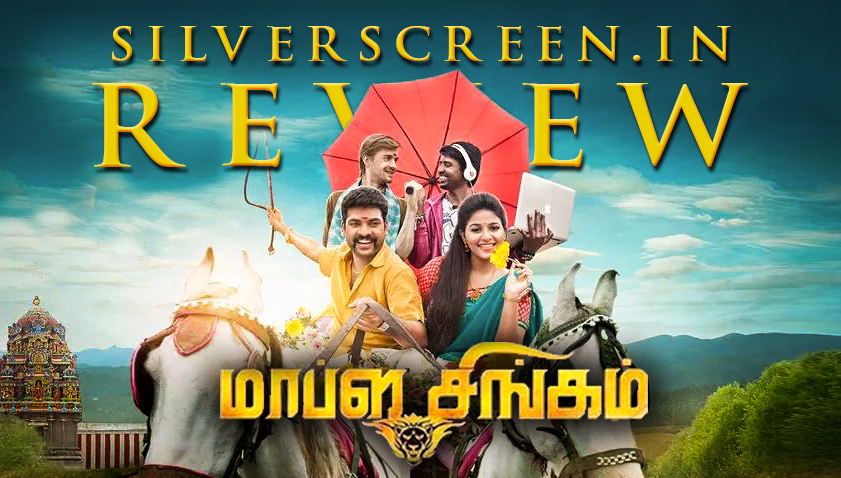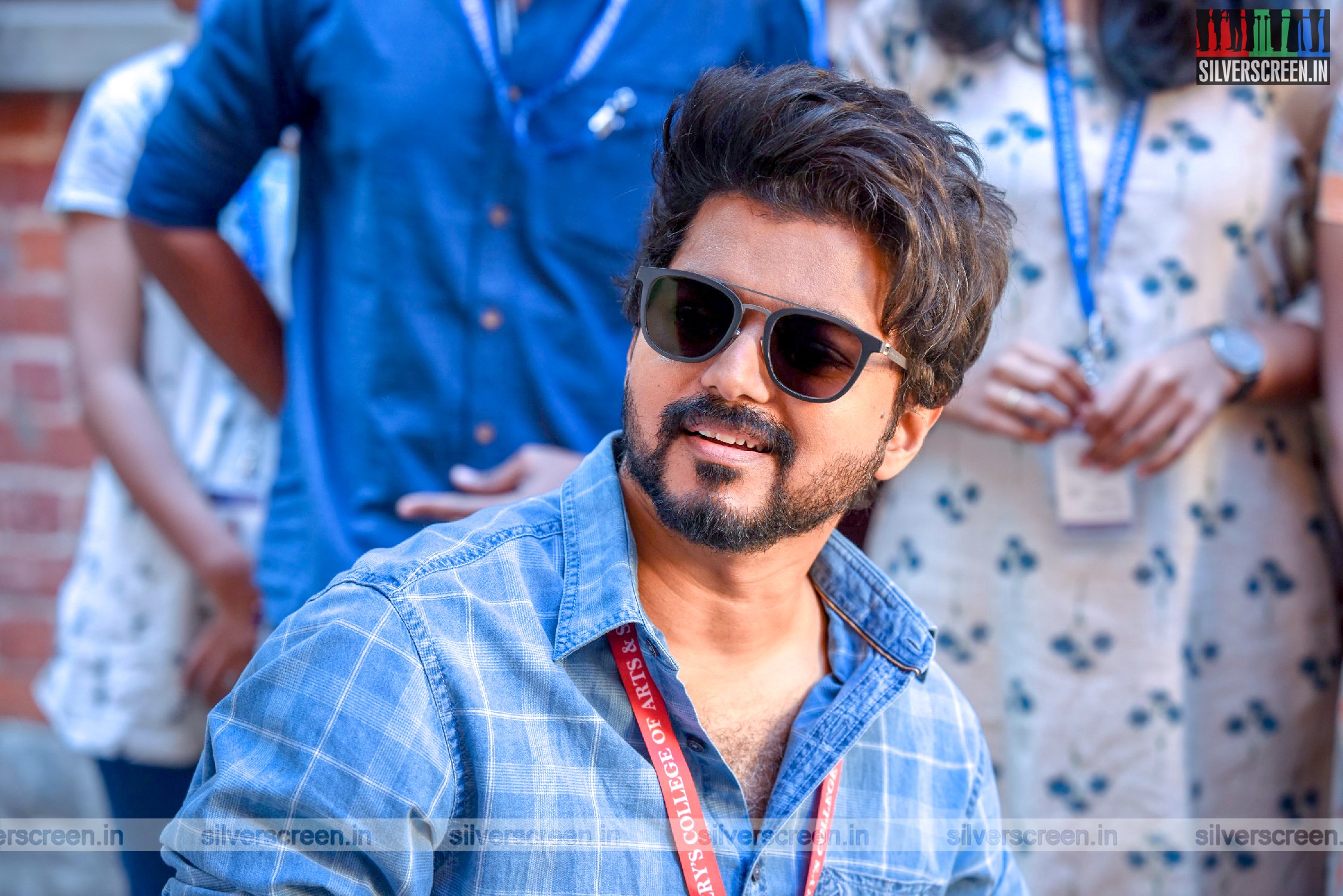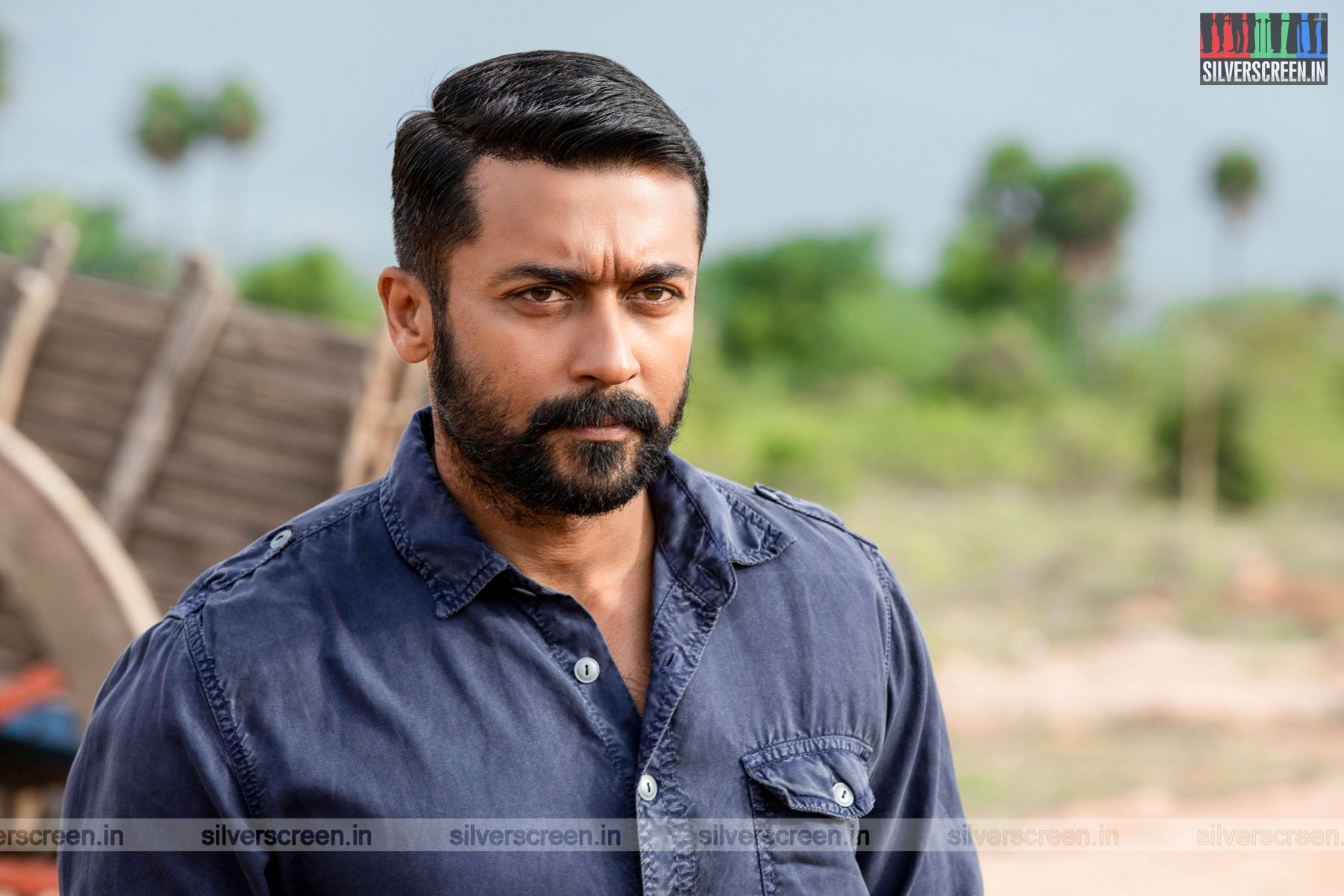“There is no genre called horror in Tamil cinema,” says film historian Theodore Bhaskaran.
As an industry that was partial to multi-genre films, from as early as the 1950s, horror films included a myriad of elements such as comedy, action, and romance to appeal to the audience.
Yaar (1985) is a great film to test out this theory. In an Omen-like tale, an old bed-ridden sage asks his follower to bring him an orphaned newborn, lest the baby fall into the wrong hands and cause the end of the world. From this point on, the film does not hold back – black tree-like hands perform dark magic on the newborn, a red-eyed Chucky-style doll moves across a corridor, and mist begins to come out of portraits.
The film also packs parallel comedy and romance tracks, multiple references to Hindu deities, over-the-top action sequences, and an unexpected Rajinikanth cameo as a devout Raghavendra follower.
Much like other films that came before it, Yaar was a multi-genre movie in the truest sense.
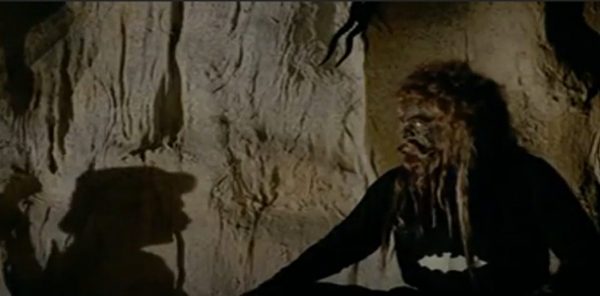
However, the tide is shifting. In recent times, genre-specific films have become increasingly popular among filmmakers. The last ten years have witnessed the emergence of genre films — niche films that focus on a particular theme. And horror is one of these genres.
Generally, invoking a feeling of dread, discomfort, and terror in viewers by utilising supernatural and macabre elements is what makes a horror film.
Most Tamil filmmakers and writers unanimously believe that even elements of shock, suspense, and magic used to fall under the category of horror in Tamil cinema.
However, old-school horror ingredients like foggy nights, Anaconda-esque snakes, and white-saree-clad ghosts are passé. There has been an evolution in storylines and filmmaking techniques along with newer filmmakers choosing to make movies that do not dilute the horror element by crowding it with elements from other genres.
A Varied Genre
Going back in time, we find that a plethora of films fell under the umbrella of horror and some of the more flamboyant ones were even given “A” certification. For instance, Marmayogi (1951), a predominantly action and adventure film that was loosely based on Shakespeare’s Macbeth, was certified as an adult film for simply featuring scenes with ghosts.
Even a self-discovery film such as Mudhal Thedi (1955), which was loosely based on It’s a Wonderful Life (a feel-good movie), fell in the category of horror as the protagonist dies and roams as a ghost for the rest of the film.
Tagging thrillers as horror films was quite popular in the Tamil industry. Take, for instance, S Balachander’s 1970 film Nadu Iravil, an adaptation of Agatha Christie’s And Then There Were None. Ten people find themselves in a house and realise that one of them is a murderer who is systemically killing the others. The film has mysterious shadows that lurk at night, a piano that plays on its own, and a woman who shrieks after seeing a menacing man at night – all of this is enough for the murder mystery to be tagged as a horror film.
The 1966 Jayalalithaa-starrer Yaar Nee, on the other hand, deliberately plays with the audience’s expectations. Rainy nights, lonely roads, a cemetery, and a woman who proclaims that she likes blood all scream horror. However, the film is really about a doctor (Jaishankar) who questions his sanity after a woman he presumed dead turns out to be his new fiancé. In the end, it turns out that the woman is a twin. And with this revelation, it becomes clear that the film is actually a thriller and the macabre elements were a ruse.

Credits: Screengrab from YouTube
‘Amman films’ are a special case in Tamil cinema. These devotional films about the goddess Amman often include horror elements. In 1995, when Ramya Krishnan took on the titular role in Amman, the typical story of a goddess coming down to protect the vulnerable, it became the cause of nightmares for many. The actress’s blue-faced make-up and wild eyes, along with scenes featuring heavy thunder and lightning, led movie-goers to deem it a terrifying film.
Ashwin Saravanan, a contemporary filmmaker who is known for his horror and thriller movies including Game Over, was one of those who felt this way. “It is a narrative of good versus evil and it’s also one of the scariest films I have seen,” he says.
Other Influences
Writer and Tamil film director Ajayan Bala says that a lot of the early Tamil horror films were also inspired by other language movies.
Some horror films have been remakes from regional film industries. Veendum Lisa, a popular Malayalam horror film, was simultaneously released as My Dear Lisa in Tamil. Cult classic Chandramukhi (2005) was a remake of the 1993 film Manichitrathazhu. Even Ram Gopal Varma’s 2003 hit Hindi film Bhoot was remade as Shock with Meena and Prashanth in the lead.
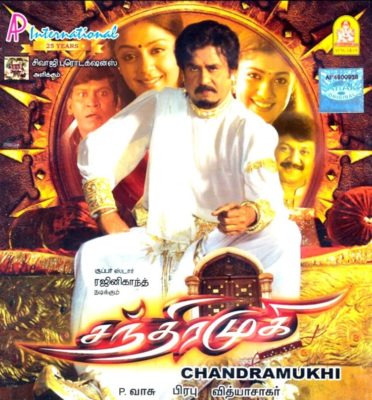
Credits: IMDB
The industry has also created other movies by taking inspiration from the West. From slasher films (a descriptively-named genre where a killer violently murders people with a sharp object) to science fiction films, every sub-genre of horror and even allied genres provided fodder for Tamil cinema’s explorations into horror, particularly in the 80s and 90s.
Naalai Manithan (1989) and Adhisiya Manithan (1990) were made on the lines of popular slasher franchises Halloween, Friday the 13th and The Texas Chainsaw Massacre which followed the well-known template of a troubled man who takes to killing. While Adhisiya Manithan was a mainly a slasher film with an ending that heavily borrowed from The Terminator, Naalai Manithan had elements of science fiction in addition to horror. It was inspired from the American film Silent Rage, where a man goes on a murderous rampage after a botched science experiment grants him near-immortality.
Similarly, Vaa Arugil Vaa (1991), which revolved around a haunted doll was loosely inspired by Child’s Play and Jenma Natchatiram (1991) was the unofficial remake of Omen.
Commenting on this trend Theodore Bhaskaran says, “Tamil cinema copies a lot. It does not evolve by itself. After the 90s and with the advent of CDs, Tamil filmmakers were able to watch more movies, particularly Eastern movies like Korean films, and took inspiration from those.” This can be seen in the late 2000s when Thai horror films Alone and Shutter served as the inspiration for Charulatha (2012) and Sivi (2007), respectively.
Fresh Ideas and Better Technology
In contemporary times, the industry has witnessed a massive change in the way horror movies are made. With fresh voices, newer techniques, and evolved storytelling, directors have expressed a renewed interest in modernising the genre.
However, horror movies are challenging to make, says Milind Rau, the director of Aval. “They can become (unintentionally) comical if not made properly. It is a thin line.”
With the heavy reliance on sound in these films, the collaboration between the filmmaker, music director, and sound engineer is crucial. Even the frame counts matter. “Only a few extra frames and the scene will not be scary,” he adds.
Ajay Gnanamuthu, who directed the 2015 horror film Demonte Colony, tells us the atmosphere while shooting it differed from his other films. “I always wanted more of silence when shooting that film in order to sustain that mood… nobody would talk or giggle. It felt like we were roaming around like the ghosts (in the film).”
Vikram Kumar, the director of the 2009 horror film Yaavarum Nalam, opines that the evolution of horror movies in Tamil is mostly related to the usage of VFX and other technology. He still feels that the narratives themselves are more or less the same. “We have become far more advanced technically, but the story only gets minor updates. It is still about ghosts – about someone who is dead and has now come back, usually for revenge. We just take different routes to tell the same story. I don’t think this will change.”
Advent of a New Subgenre
Filmmakers say that one of the most attractive aspects of horror movies is the low budget. They are guaranteed to either make a profit or at least break even, creators note. In this scenario, a plethora of pure horror and horror-comedy films began to bombard the big screen.
Many directors laud actor-director Raghava Lawrence for popularising horror comedies and parodies with the Muni/Kanchana franchise. With slapstick humor, versatile comedic characters, and dramatic but enjoyable jump scares, the former choreographer started a new trend in Tamil cinema. “Raghava Lawrence master was the one who really understood what it meant to scare and make people laugh. He set the precedent for making horror films that innovative and entertaining. It said that a horror film does not have always to be violent,” says Ashwin Saravanan.
Horror comedies have made strides in the industry as they have managed to strike a chord with the Tamil audience. Successful stars like Jiiva and Santhanam were ready to experiment with these films, paving the way for new directors to also explore them.
After Kanchana (2011) was released, the series developed a pan-Indian audience with two successful sequels and a Hindi remake titled Laxmii with Akshay Kumar playing the titular role.
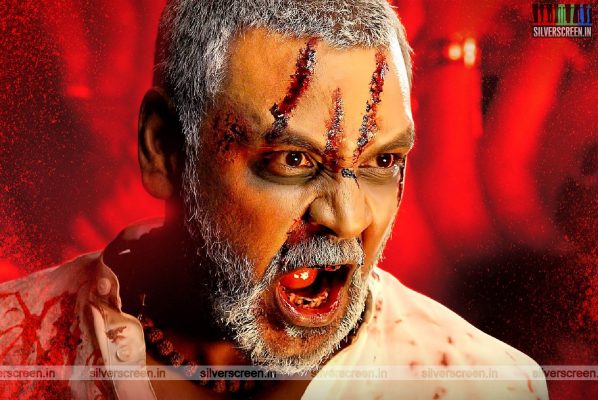
Consequently, a plethora of such films including Sangili Bungili Kadhava Thorae (2017), Bayama Irukku (2017), and Devi (2016) emerged.
Aranmanai (2014) and its sequels are also known for their success in this space. Loosely based on the 1970 horror film Aayiram Jenmangal, the first film follows a family who visits their ancestral mansion with the intention to sell it. However, it is haunted by a ghost who wants to avenge her death.
Comedian-actor Santhanam collaborated with his Lollu Sabha director Rambhala to make the 2016 horror comedy Dhilluku Dhuddu. He plays Kumar, a middle-class man who falls in love with a rich woman (Anchal Singh) whose angry father invites Kumar’s family to stay at a mansion that is said to be inhabited by a vengeful spirit.
Speaking about the idea for making the film, Rambhala says, “The idea came to me when I was working with Vijay TV. There were movies about how ghosts really scare their characters, so I thought of what it would be like if we made fun of ghosts? I wanted to Dhilluku Dhuddu to be something different,” he says.
Producer SR Prabhu who has produced horror films like Kaashmora under his banner Dream Warrior Pictures says that the reason for the popularity of horror comedies is because they rake in good business compared to other genres due to the acquisition of Hindi dubbing rights.
Another trend that cinema has witnessed very recently is the emergence of sex comedies which have also been weaved into the horror genre. Movies like Iruttu Araiyil Murattu Kuththu (2018) and Irandham Kuththu (2020) are abundant with adult content.
Both films have a similar storyline- a sex-hungry ghost tries to use the male leads to gratify her needs. It is also peppered with jokes about homosexuality, masturbation, and other such sexual innuendos.
Irandham Kuththu was marred with controversies and the Madras High Court ordering its teaser to be removed from YouTube after a public interest litigation was filed stating that the content could be easily accessed by children. Despite the barrage of criticism, the films saw commercial success and developed a niche audience.
However, mainstream horror comedy directors are still averse to this sub-genre. Rambhala says, “I would never make such a film because I would want children and families to enjoy the movie together.”
Director Vikram Kumar says, “Pure horror films and horror comedies are two completely different genres.” He also notes that while the latter is very popular, full-blown horror movies are still taking their time to find a niche.
Emergence of Pure Horror
The concept of a pure Tamil horror film has only emerged in recent times. Seldom featuring songs, such films are almost always serious and they have especially gained traction in the last two decades. For instance, U-Turn (2018) was an out-and-out horror film that focuses on a journalist (Samantha Akkineni) whose investigation about unlawful motorists takes a sinister turn when they start turning up dead.
In Aval (2017), the lives of a surgeon Krish (Siddharth) and his wife (Andrea Jeremiah) are marred by paranormal occurrences after he jumps into a well to save his new neighbour Jenny from drowning, leading them to believe that Jenny is possessed. The film features only one song at the beginning of the movie in order to avoid deviating from the film’s horror elements.
Other contemporary horror films have chosen to make it fun by including songs, comedy, and even romance despite horror being the focal point. Ajay Gnanamuthu says that his decision to add a few comical moments in his film (Demonte Colony) was to make it a wholesome experience for his audience.
“It depends on the filmmaker and how he wants to present his horror film to the audience. If he feels that his audience will like songs, then he will keep it in the movie,” says Vikram Kumar.
Continued Popularity
Historians like Theodore Bhaskaran believe that socially relevant films are piquing directors’ interest and still remain skeptical about the timelessness of horror and cinema-goers’ appreciation for it. While films like Karnan and Mandela have received critical and commercial success, horror films are also finding their footing. Raghava Lawrence and P.Vasu have announced that they will be making a sequel to Chandramukhi. Apart from this, director Nambikkai Chandru’s upcoming horror film 3:33 has no songs and action sequences in order to have no deviations.
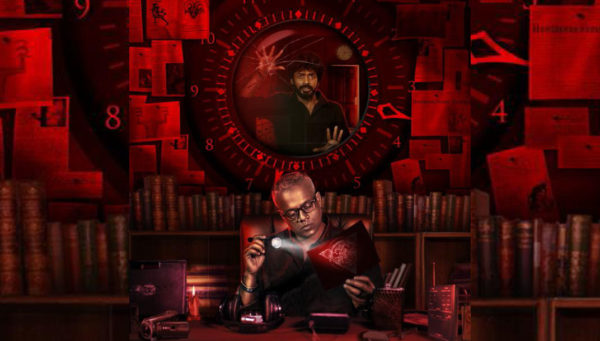
This evolution of making nuanced and specific stories started early with the Muni franchise, Eeram (2009) and Yaavarum Nalam (2009). The trend was obvious; creators wanted to do away with conventional horror movie stereotypes and embrace fresh and distinct storylines.
Eeram packed the theme of domestic abuse in a story where the spirit uses water as a medium to communicate. Similarly, in Yaavarum Nalam, the television set is haunted and the ghosts use it to exact revenge on their killer.
In 2012, Kartik Subbaraj directed Pizza, which was a heist film masquerading as a horror story. Similarly, Aval is a horror movie that tackles female infanticide and patriarchy.
Ajayan Bala says, “It was mostly thriller films that used to come out (in Tamil cinema) and only after Pizza that more such movies began to come out.”
Recommended
The trend continued as movies have been credited for using horror as a vehicle to explore larger concepts. Speaking about how the last couple of years have seen a trend of making genre-specific films, director Ashwin Saravanan talks about recent movies like Andhagaram (2020) and Pisaasu (2014) utilising the concept of horror to talk about other ideas.
Director Myskinn’s Pisaasu revolves around a violinist who is haunted by the spirit of a young girl who died in an accident. He then realises that she is trying to get him to help her find out who killed her. Saravanan says that Pisaasu has its fair share of jump scares but it is also about love, revenge, and forgiveness. “When filmmakers with contrasting voices come into horror, own it, and put their spin on it, it makes the horror genre fresh,” he adds.
With directors continuing to find commercial success in this sphere, only credit and recognition remains a question. Ashwin Saravanan says, “People have a distaste for it because they think that you are trying to scare people by using lazy techniques.”
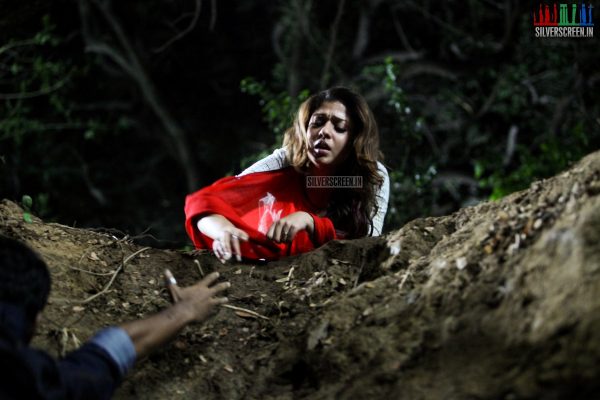
Directors unanimously agree that horror is a huge genre and it only depends on making sure that its execution is good. Believing that there is a purpose for every genre, they point out that well-made horror films must be considered good cinema. With films like Maya (2015), Chandramukhi (2005) raking money at the box office and receiving critical acclaim, the argument that horror is not serious filmmaking has become void.
“There is a primal reason for every genre’s existence. Horror raises questions on survival, fear, one’s anxiety, and existentialism… a well-made horror film is like therapy for me,” says Saravanan.

